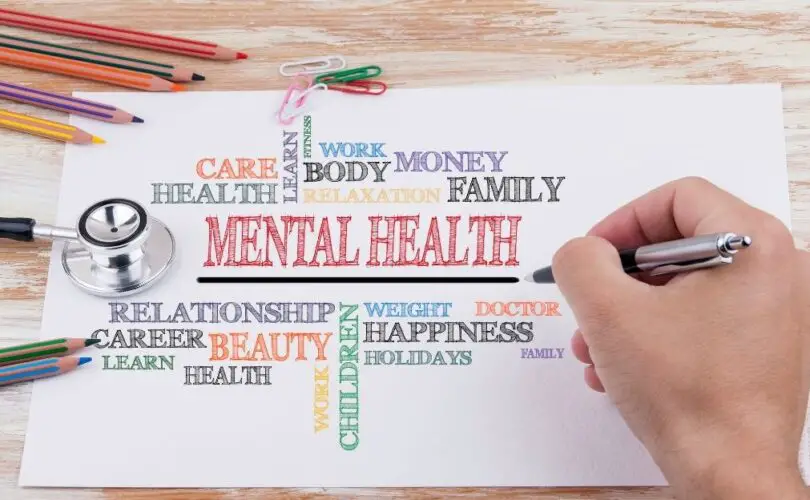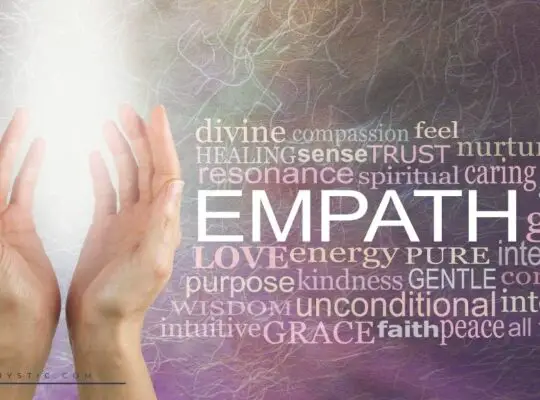In this article: Understand your emotions so you can begin to process and move them in a quick and healthy way.
Having a strong emotional vocabulary is essential for everyone. When a person has a strong emotional vocabulary, they’re able to express their feelings and emotions with ease.
While there are many benefits to building a strong emotional vocabulary, the most important and prominent benefit you stand to gain is the ability to communicate your feelings thoughtfully and effectively. Ultimately, you understand yourself better than anyone else ever will – this means you have the unique power to ensure that others know exactly how you feel, where your boundaries lie, and how your emotions are working within you.
Building a larger emotional vocabulary requires more than memorization of some fancier, more descriptive terms for your emotions – it also involves putting those emotional label words into context and practice.
When you’re building your emotional vocabulary, you’re learning new ways to label your emotions while processing the way those emotions feel and affect you. A stronger, larger emotional vocabulary means you’re better equipped to do this quickly and efficiently, meaning you can overcome difficult emotions much easier than someone with a weak emotional vocabulary.
Learning more about your current emotional vocabulary and working toward strengthening it can be a laborious process. It takes time, effort, and energy to address deficiencies within your own ability to process and tackle tough emotions, but the payout is phenomenal.
Working toward a stronger emotional vocabulary helps address a variety of emotional issues and helps you express yourself clearly.
What It Means To Build An Emotional Vocabulary
Building a strong and robust emotional vocabulary sounds like a homework assignment you’d need to complete for your English class. If you thought the days of exploring new vocabulary words ended with your schooling, think again!
Your emotional vocabulary refers to the words you use to express your feelings and emotions. Simply put, a person with a bigger emotional vocabulary is able to describe their feelings more accurately and identify the emotions they’re feeling more precisely.
When a person has a broad range of many different words to label their feelings, they can usually diagnose their emotions quickly and correctly, which moves them through processing those emotions a lot more quickly than someone who struggles to identify their emotions!
When you build your emotional vocabulary, you expand your definition of feelings and emotions past the “umbrella terms,” or commonly used emotional words to describe a feeling. When you can find the most accurate term to understand your exact feelings, it’s much easier to identify what’s upsetting you and how you can begin to handle those feelings in a healthy way and move beyond them.
However, building your emotional vocabulary is more than just memorizing a bunch of new words you can use to label your feelings. While understanding the different ways you can feel and experience emotion is important, it’s also imperative that you practice putting those emotions into context.
For example, as you narrow down your emotional experiences by different umbrella terms and then explore the ways that those umbrella terms expand into a wide variety of more specific feelings, you can begin connecting them to exactly why you’re feeling that way.
For example, the term “jaded” is a lot more specific than feeling “bored.” When you add the word “jaded” to your emotional vocabulary, you can use it as a specific label for the emotions you’re feeling when you grow weary or tired of something after experiencing it too often. Simply put, a wide range of emotional vocabulary words helps you identify and express your own emotions much more clearly and correctly!
Example Of An “Umbrella Term” That Can Be Unpacked Into More Emotional Vocabulary Words
Think of “umbrella term” emotions as your “first reaction” emotional words. For example, consider the following umbrella term:
Anger
If something makes you feel anger, this emotion may blossom inside you quickly. In fact, you may have a hard time pinpointing exactly why the particular stimuli made you feel angry in the first place because this emotion is strong, powerful, and sudden. However, there are many other emotions you can place under the “anger” umbrella, such as:
Core Emotion: Anger
- Critical
- Aggressive
- Frustrated
- Bitter
- Resentful
- Humiliated
- Let down
While your initial reaction may be anger, there are many emotions that fall under the broad term of “anger” to describe your emotions more specifically. For example, you may feel angry after learning that your romantic partner cheated on you – this can be more specifically described beyond anger. For example, you may feel angry in this scenario because:
- You trusted your partner to be faithful, so you feel let down that they didn’t do that for you.
- You did not ever think that your partner would cheat, so now you’re feeling humiliated that they blindsided you in such a hurtful way.
- You worked hard to make your relationship with your partner, so now that they’ve cheated, you’re feeling frustrated. This also makes you feel bitter toward them because you feel like they’ve wasted your time and energy.
In this scenario, you’ve taken your initial umbrella emotion and used stronger emotional vocabulary words to pinpoint more precise and specific emotions you’re experiencing. By doing so, you gain a clearer picture of exactly why you’re feeling the way you feel. While all of these emotions are difficult, you’ve put yourself one step closer toward processing these emotions in a healthy way.
Why Understanding Emotions Is So Important
Understanding your emotions gives you the ability to begin processing and moving past them in a quick, healthy way. Emotions come in a huge spectrum, and while some are pleasant to experience, others aren’t! When you’re finding yourself drudging through a difficult wave of emotions, learning how to understand them will put you one step closer to processing them more quickly.
Besides the mental stress you can save yourself by understanding your own emotions, you can also learn how to express your feelings more effectively with others.
Communication is a key component of any happy and successful relationship, whether it’s with your best friend, your romantic partner, or your family members.
When you can effectively communicate the way you’re feeling with others, you can accomplish a variety of important tasks, such as:
- Establishing your boundaries and limitations with others
- Explaining to someone why they’ve hurt/upset you in a clear, concise way
- Keeping your relationship with someone intact by not concealing or repressing difficult emotions
- Understanding how emotions may present differently among a variety of people.
While expressing your emotions is not always easy (and honestly downright uncomfortable and unpleasant at times), it’s a necessary part of keeping the lines of communication open and clear with you and the people with whom you have relationships.
When you can’t express yourself clearly and precisely, you run the risk of not expressing your emotions properly, which can cause miscommunication between you and a loved one.
The damage to your valuable relationships isn’t worth the struggle of not being able to express yourself clearly – instead, learning to communicate with a strong and broad emotional vocabulary is the key way to handle these tough and uncomfortable situations with ease.
The Benefits Of Being Able To Label Your Emotions In An Accurate Way
There are a variety of benefits associated with being able to label your emotions correctly and accurately. For example, having a robust emotional vocabulary allows you to….
Trust Yourself To Handle Your Own Emotions Correctly, Carefully, And Kindly
If you’ve ever been in a situation where trusting yourself to make a good choice or do the right thing felt difficult, you know how upsetting that can feel.
When you have a strong emotional vocabulary, you can trust yourself to begin processing your emotions correctly. By addressing your feelings and emotions with specificity, you’re treating yourself with care and kindness.
If you’ve ever felt misunderstood by another person, you likely felt voiceless and hopeless – unfortunately, you can experience the same feelings with yourself! To avoid this extra frustration on top of already-challenging emotions, learning how to label your emotions correctly is the best way to treat yourself with care and kindness during a difficult time.
Express Your Emotions And Feelings To Others In A Clear, Well-Communicated Way
Not having your emotions understood by others is upsetting. One of the best ways to ensure you’re communicating your emotions effectively to others is to have the emotional vocabulary to do it well!
With a robust emotional vocabulary, you can describe exactly how you’re feeling to others without any layers of mystery or possibility of misunderstanding. When you’re missing the emotional vocabulary words from your toolbox, it can be difficult to describe to another person why you’re upset or feeling a certain way, for example.
With the precise words you need, you can communicate your feelings effectively with other people, making it easier to avoid conflicts and misunderstandings.
Process Your Own Emotions In A Healthier, Quicker Way
Handling emotions is a messy business. Even when you have a good grip on your emotions and a strong emotional vocabulary, it can be hard to explore your own emotions so they can be processed effectively.
However, when you lack a strong emotional vocabulary, you can experience a lot of trouble processing emotions – even to the point where you can’t process them at all! In situations where a person doesn’t have the skillset to process their own emotions by identifying and labeling them, they often handle them by not handling them at all, which is known as repression.
Repressing difficult emotions doesn’t resolve them or make them disappear. Instead, repression leads to many big emotions building under pressure until they eventually “explode” in an unwanted way.
Rather than finding yourself trying to repress emotions, you can use a strong emotional vocabulary to begin identifying your specific feelings so you can face them head-on by processing them rather than repressing them.
Remove The Moral Labels From The Way You’re Feeling
Many people tend to associate their feelings and emotions with morality. For example, a person may associate feeling guilt, shame, or unhappiness with “being bad.” The same person may also associate feeling peace, happiness, or calmness with “being good.”
While it’s easy to associate different emotions with “being bad” or “being good,” the truth is that all emotions are normal, valid, and a part of the human experience. While there are certainly some uncomfortable and difficult emotions to face, this doesn’t mean that they’re bad or that you’re a bad person for feeling that way! Instead, it means that you’re having a normal emotional reaction from something that causes people to feel uncomfortable emotions.
When you have a strong emotional vocabulary, you can start labeling your difficult feelings with ease. It also makes you more comfortable with identifying and letting yourself feel those emotions as they occur.
As you experience and practice the art of emotion labeling more and more, you’ll lose the sense of morality about the emotions you’re experiencing. Instead, you’ll recognize that you’re feeling a certain way and begin working through your feelings rather than making yourself feel worse about them.
You Begin To Pick Up On Other People’s Emotional Nuances
Think of the last time you felt sadness. In that memory, you can probably identify a handful of different ways you expressed that sadness or how sadness felt to you. If you compared your own experiences with sadness to other people’s, however, you might be surprised to learn that everyone experiences and expresses it differently!
Having a strong emotional vocabulary helps you understand other people’s emotional nuances. Because everyone experiences and expresses their emotions uniquely, it can be a challenge to identify many emotions among your different friends, family members, and coworkers, for example.
Your best friend and your mother are both human beings who have experienced happiness, but when you compare the two, you may notice that each of them express their happiness in both similar and contrasting ways.
When you have a lot of emotional vocabulary words in your toolbox, it’s easier to understand how and why some emotions appear to certain people in different ways than others. Not only does a strong emotional vocabulary help you communicate with yourself more clearly, but it also helps you understand and communicate with others more effectively as well.
Case Study: Understanding Why Having a Strong Emotional Vocabulary Is Important
In this example, consider Jonathan. Jonathan has been working tirelessly on a big work project with one other team member in his department, Trisha. The entire project is estimated to take the pair about one month to complete and then they’ll be expected to present their results to a big group of company executives. Jonathan and Trisha have been told that, if the project goes well, they’ll both be considered for nice raises.
Because of the pressure from this project, Jonathan focuses really hard to get his half of the work completed. However, Trisha has a different attitude about the workload. Instead of working hard and collaborating with Johnathan, she keeps skipping their meetings, blowing off progress reports, forgetting to answer his emails, and not finishing her tasks.
A week before the project is due, Jonathan learns from an email update that Trisha only has about a third of her work portion completed – she’s left a dangerous amount of the job unfinished very close to their deadline. When he realizes this, Jonathan immediately feels a wave of disgust. This emotion compels him to write back a nasty email, but he stops himself before he opens a new message window.
First, Jonathan recognizes that the strong emotional reaction he’s feeling is disgust. He takes a few minutes to explore that emotion and break it down further.
While he’s feeling disgusted at Trisha’s lack of work ethic, he begins to explore his emotional vocabulary to pinpoint the exact feelings he’s experiencing and why:
- He feels disappointed because he trusted Trisha to do her share of the workload. He thought that Trisha was a super hard worker, so the realization that she didn’t do her part makes him feel appalled at her choices.
- He feels disapproving of Trisha’s effort toward completing her share of the project. He feels judgmental of her personal choices to slack off and embarrassed that his name is going to be associated with her’s when they present the project.
Once Jonathan takes a minute to correctly label his emotions, he feels the disgust begin to simmer down. He realizes that his emotions are valid and normal reactions to this very worrisome situation but sending a nasty email to Trisha won’t help him process these feelings in a helpful or healthy way. Instead, feeding into his feelings of anger and disgust this way will only make the situation even worse!
To address these feelings properly (and to stop himself from having a negative, rash reaction that could make the situation worse), Jonathan stopped himself, labeled his specific feelings, and then identified that he needed to seek a better course of action.
In this situation, having a strong emotional vocabulary helped Jonathan identify his emotions and stop his personal dilemma from becoming worse.
5 Strategies For Building A Strong Emotional Vocabulary
Building a stronger emotional vocabulary is possible with hard work and practice! Because no two people learn the same way, you may need to try a variety of strategy combinations to find a method that works best for you. To get started, consider the following emotional vocabulary building strategies:
Recognize The Ways You Place Morality On Your Feelings And Emotions
The first step toward strengthening your emotional vocabulary is dismantling the systems that make it challenging for you to strengthen it in the first place. Often, people get in their own way with this task because they’ve learned over time to associate their different emotions with morality.
Rather than seeing your different emotions as “being good” or “being bad,” learn to view all your emotions on the same, neutral scale. All emotions are a normal part of being a human being. Even difficult emotions are normal (though they may feel uncomfortable).
The next time you feel a wave of strong emotion, challenge yourself to think “this is a normal emotional reaction” instead of allowing yourself to think you’re “being bad” for feeling a certain way!
Practice Breaking Down Your Emotions Before You Have An Emotionally Charged Reaction
This is tough! This strategy is effective but it may take practice to learn.
The next time you feel a strong emotion such as anger or frustration, put yourself in a “pause” for a few minutes. For example, when you feel a rush of strong emotions like anger and frustration, your first reaction may be extreme.
For example, you may feel like Jonathan did in the case study example – you really, really want to send the Trisha in your life that nasty email to express your anger! However, this is usually a futile way to handle an emotion that doesn’t solve the problem. If anything, reacting this harshly can make everything worse.
Instead, during your “pause,” make yourself break down the reasons behind your sudden and strong emotion. For example, Jonathan realized he was angry because Trisha was being lazy, and that disappointed him. Jonathan broke down his initially harsh emotional reaction into specific causes.
When you can clearly define how you’re feeling and why, it can help change your perspective on the situation, accept your feelings, and move forward in a less-reactive way.
Get Yourself Familiarized With The Emotion Wheel
According to Positive Psychology, human beings can experience about 34,000 unique emotions. With that many possibilities, learning how to label your precise emotions can feel like a huge challenge. It’s tough to put a label on a specific feeling when you don’t have the right words to do so.
This is where the Emotion Wheel comes into play. The Emotion Wheel is a giant circular chart tool developed by Dr. Robert Plutchik. Dr. Plutchik researched human emotions and discovered that all emotions can fall under eight large, overarching labels: Joy, sadness, acceptance, fear, disgust, anticipation, surprise, and anger.
In the Emotion Wheel, Dr. Plutchik uses these eight major labels as the core of the circular chart. Each section of the chart expands into tons of more descriptive emotional terms that fall under those eight major categories, building the giant wheel-shape. This tool is incredibly helpful in identifying precise emotions under these larger categories.
For example, if you’re feeling sadness, you can scan the “sadness” section of the wheel to break down that big emotion further and determine which specific labels your experiences actually align with best. Many folks are often surprised to learn that their “sadness” is actually a combination of three or four other, more specific emotional experiences!
Take Small Steps To Get More Comfortable Discussing Your Feelings With Yourself And With Others
A great way to strengthen your emotional vocabulary is to practice talking about your feelings. If the idea of discussing your feelings with yourself or other people makes you cringe, you aren’t alone – these types of conversations aren’t always pleasant!
However, learning how to discuss your feelings in an honest, up-front, and clear way becomes easier as your emotional vocabulary grows. In turn, it’s also a great way to practice developing your emotional vocabulary.
When you initiate a conversation about how you’re feeling, it’s easier to let that conversation turn into more specific territory about how you’re feeling and why. These discussions don’t need to begin as long, complicated, or complex.
For example, you can initiate the process by using one of the following sentence starters to get your thought sharing process moving:
- When you did __________, it made me feel really __________.
- This situation makes me feel __________.
- My reaction to what you’re saying is __________.
- Right now, I am feeling __________.
While these sentences are short, they are excellent ways to get your initial emotions “out” and into the conversation. After a while, you’ll notice the way you address and discuss your feelings will get more specific and precise, but the first step is getting used to bringing up your emotions as a topic of conversation.
Pay Attention To Other People And Ask Them Questions
Another wonderful way to develop a stronger emotional vocabulary is to understand how emotions may present differently from person to person. Besides visual observations, you can get more in tune with others’ emotions by asking them questions.
Your questions don’t need to be prying or intrusive. In fact, simply asking someone “how are you doing today” is a good way to get the conversation moving. Having a strong emotional vocabulary is well taught through examples.
For instance, your best friend may express their sadness differently than your mother does. When you take time to talk to them, ask how they’re feeling, and observe their behaviors, it becomes easier to notice the nuances of sadness between each of them over time.
This also increases your emotional vocabulary – you understand how different feelings gel together to form “sadness” in each of these loved ones.
The Bottom Line
Building a strong and robust emotional vocabulary is an incredibly useful tool. Not only does a strong emotional vocabulary help you express your own emotions in a healthy way, but it also helps you identify other people’s emotions.
People who can discuss emotions openly and clearly – whether it’s about their own emotions or what other people are feeling – are able to process those emotions in a quicker, healthier way.







